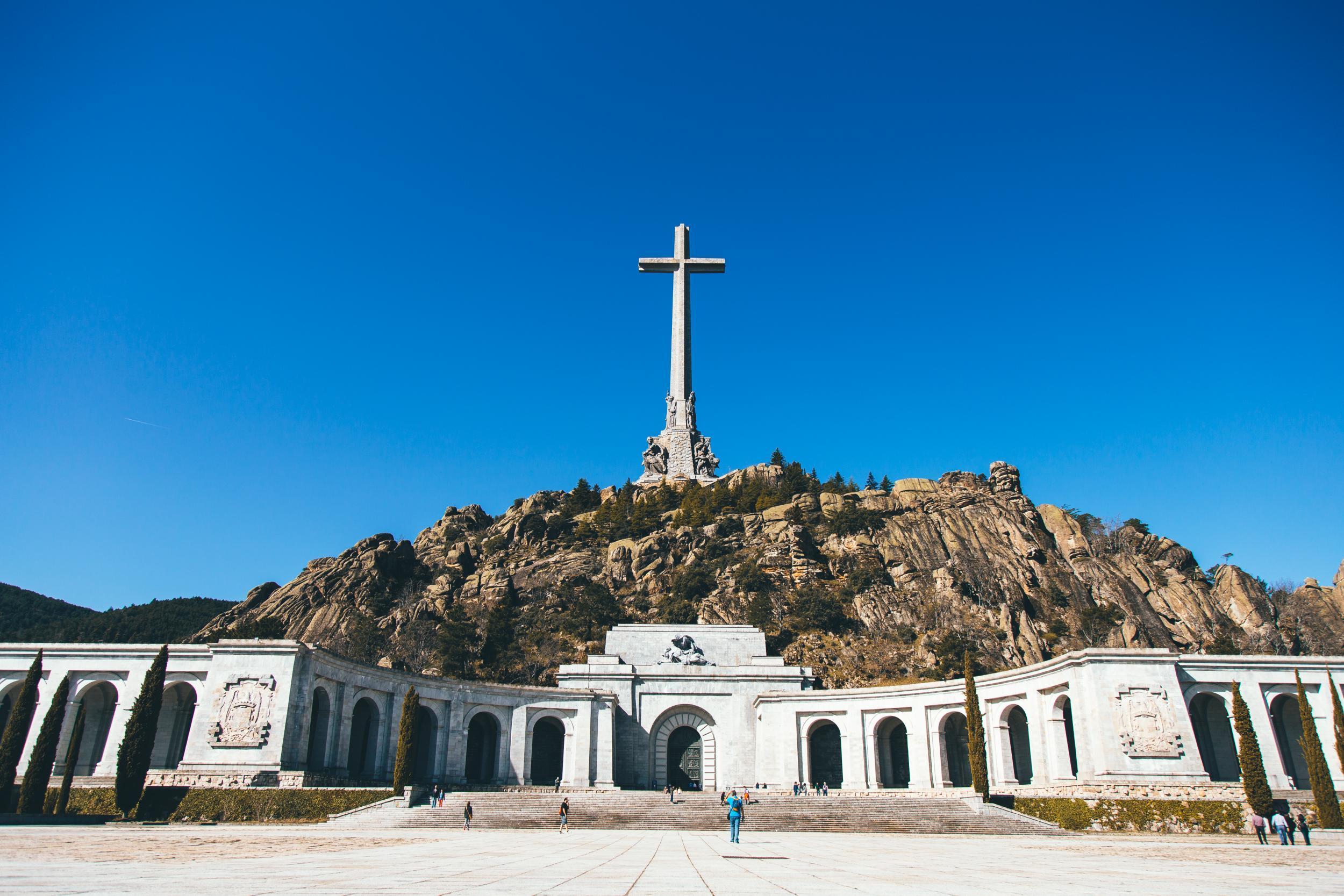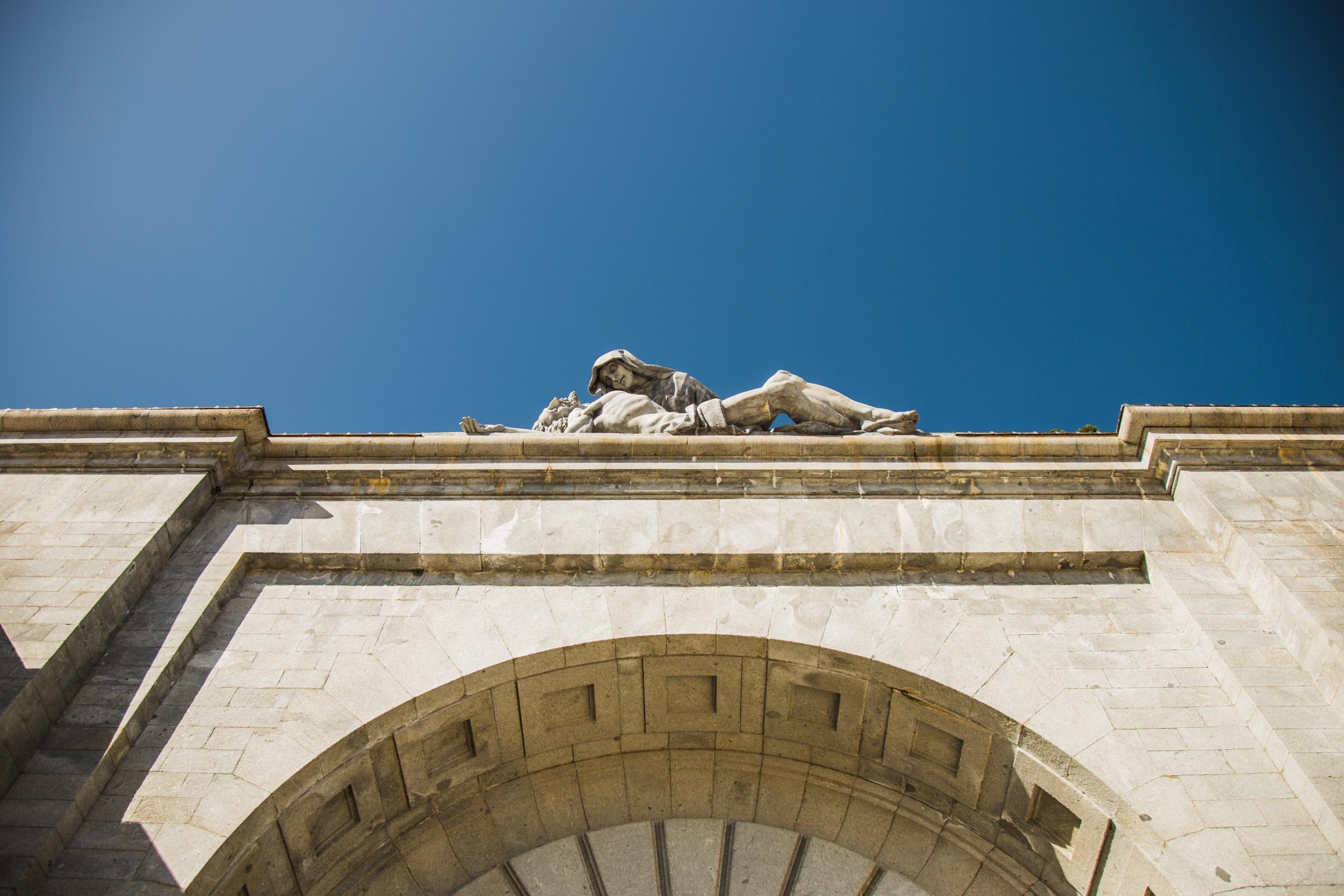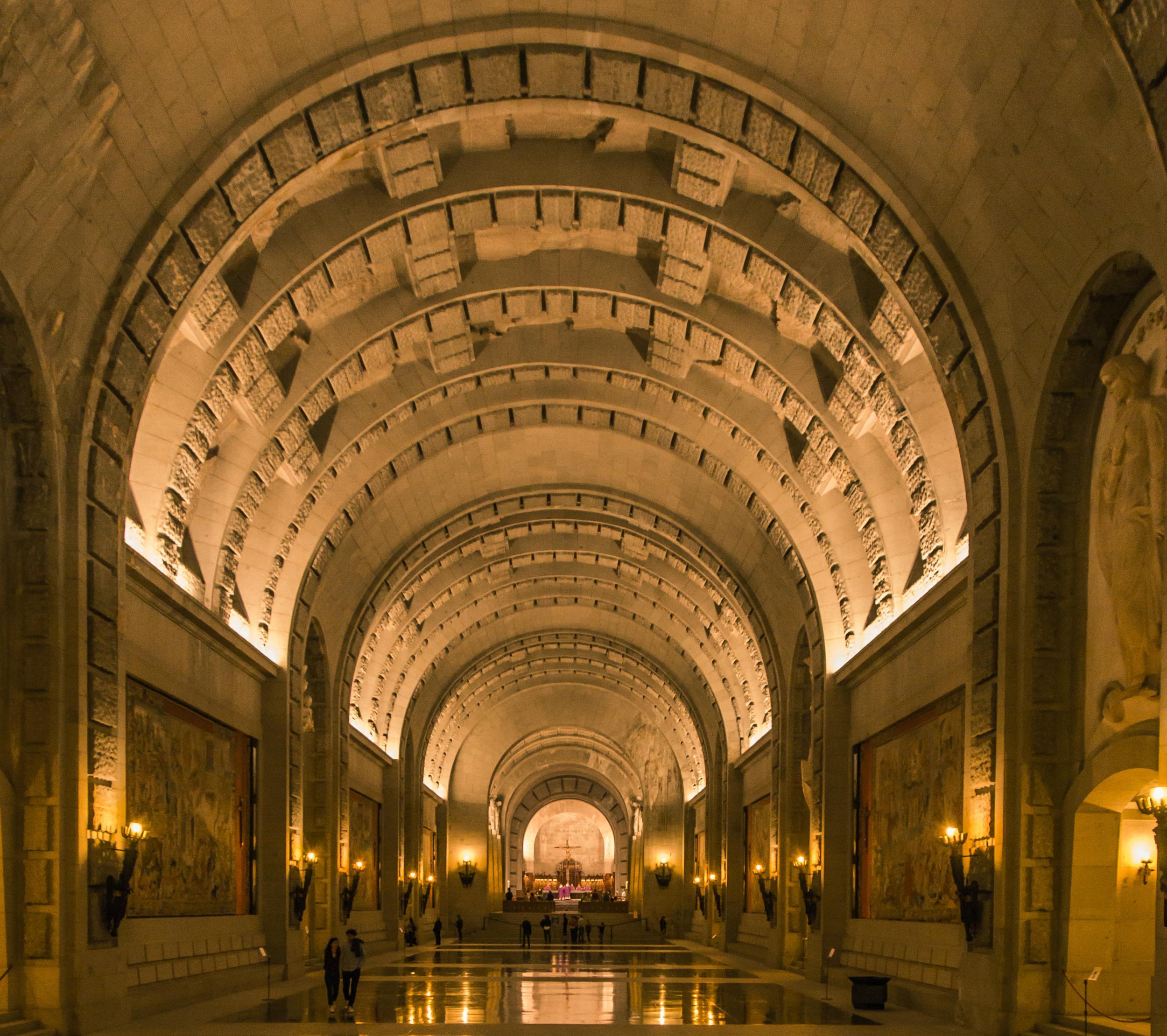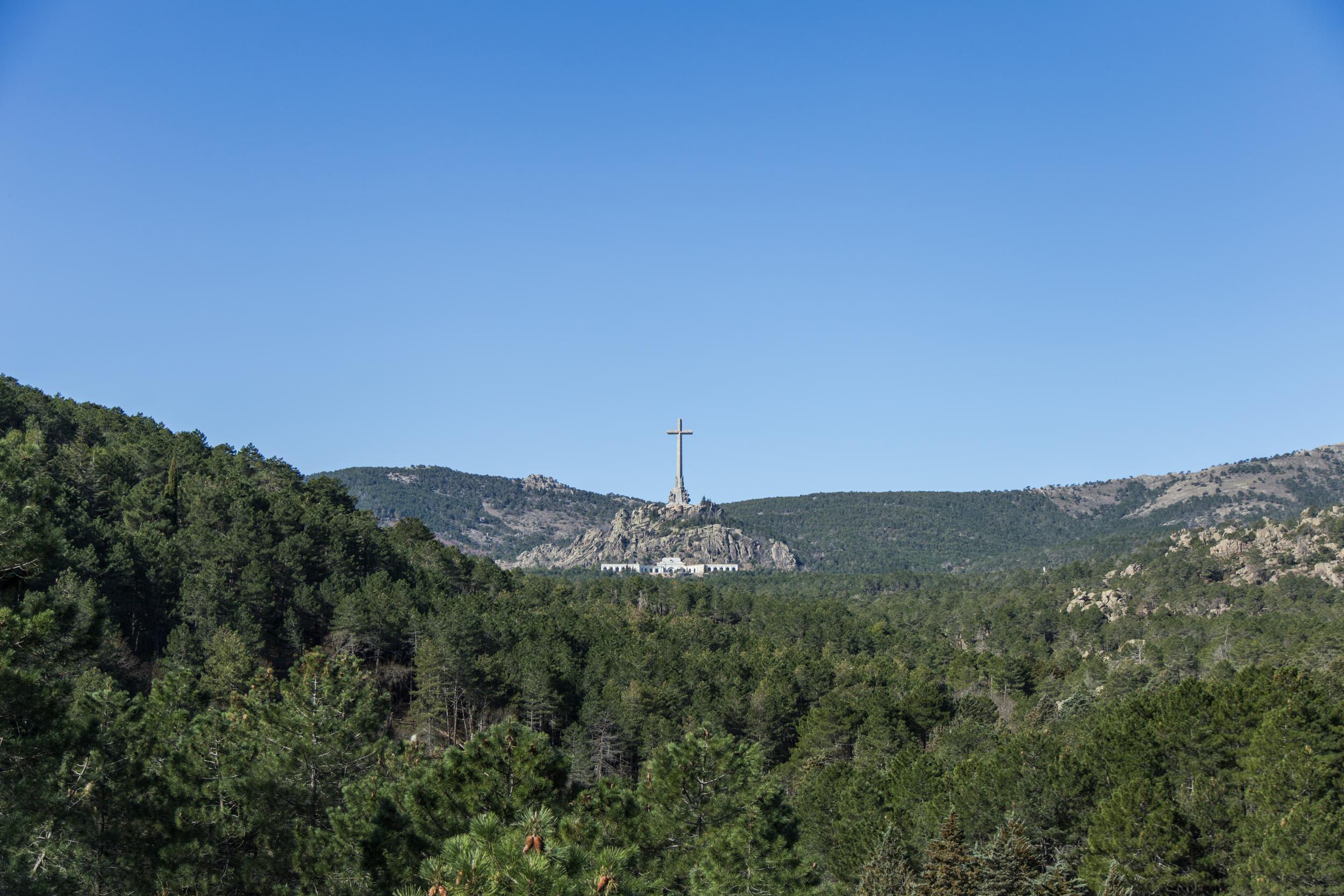Valley of the Fallen: Inside Spain's most controversial visitor site
An hour outside Madrid is Spain's most controversial memorial. Stephen Phelan visits the grave of General Franco

There are still plenty of Spaniards who would pay good money to spit on the grave of General Francisco Franco, more than 40 years after his death. There are others who would happily part with the €9 admission fee to come and lay flowers on the plain stone that bears his name – but not his rank – inside the Basilica of the Holy Cross of the Valley of the Fallen. Neither form of tribute is now permitted in the church, where Spain’s former military leader lies surrounded by the bones of followers and enemies alike.
Security is tighter than it used to be at this vast and divisive monument to the Spanish Civil War, located an hour's drive north-west of Madrid. The site was bombed by Maoist anti-fascists as recently as 1999. Flag-waving Francoists and Catholic-authoritarian Falangists from the other side of the spectrum were known to get a bit over-enthusiastic while paying their respects here, before new rules were brought in about 10 years ago. Today, it stands as Spain’s most sombre tourist attraction.
You can see the place from miles out on the A-6 motorway. A huge granite cross rises straight up from the rock of the Sierra de Guadarrama, with a colossal esplanade carved out to make a platform for the basilica beneath. The vaulted crypt below was bored into the mountain as part of the construction – which took almost two decades across the 1940s and 50s. The whole thing was Franco’s idea.
The Civil War was not long over and WWII was well underway when the Generalissimo commissioned what he called “a national act of atonement”. Designers Pedro Muguruza and Diego Mendez were ordered to create a quasi-mythic space that would resonate with “the grandeur of monuments of old, which defy time and memory.”

They revived the sepulchral style of 16th-century Spanish architect Juan de Herrera, while the centrepiece resembles the ancient rock crosses raised by early Christians around Kerala in the first century A.D. But driving up from the main gate, along the winding access road that leads through thick pine forest and over worn stone bridges, the complex comes to look like something even older and weirder. A Mayan temple, maybe. A Babylonian ziggurat. A mountain altar for arcane rituals, or human sacrifices.
Even those who don’t subscribe to the theory of psycho-geography might start to feel a spooky twitching in their compass on approach. Anyone who’s ever read For Whom The Bell Tolls will recognise this terrain from that novel, which was set amid the fighting that occurred in these hills and trees between Madrid and Segovia around May 1937. No doubt there are still bullet casings and blasting caps out there under the pine needles, left behind by the republican partisans upon whom Ernest Hemingway based his story.
Some of those guerillas, if captured, may have helped with the building of this monument as prisoners-of-war. Franco’s regime offered to reduce the sentence of every convict who volunteered to join a work detail, though allegations persist of wholesale forced labour. The term “slave labour” has been used too, and Catalan politician Jaume Bosch recently went on record to describe this site as “something like a Nazi concentration camp”.
Which gives you some idea of the strength of feeling concentrated on this valley even now. The surrounding forest floor is said to hold about 40,000 bodies from both sides of the conflict, while only Franco and the like-minded Falangist leader Jose Antonio Primo de Rivera had the honour of burial inside the church itself.

To reach their tombs, a visitor first has to walk under the cross, held up by granite giants representing the apostles and virtues. Then into the edifice itself, reminiscent of Hitler’s building planner Albert Speer. Then through the airport-style security gate, and past the militaristic icons and apocalyptic tapestries that decorate the interior – statues of angels with swords, images of the beast and the false prophet, chapels for the patron saints of the army, navy and air force.
The main lights are dimmed for morning mass, the black marble floor shines like a lake at night, the walls echo with Latin choral singing from the purple-robed priests on the distant altar. The effect is powerful, mesmeric, and unnerving. Franco is on the far side – furthest from the daylight, and the sunny Spain that so many come to visit. This is Spain too, though, and the past is still present. To be fair to the dead General, he never chose this as his final resting place. And that bolsters the case of those who want him out of here.

Earlier this year, the socialist opposition party PSOE put forward a resolution for the removal of his remains from this basilica, and the launch of a new truth commission into his regime. It was rejected by the conservative People’s Party, leaders of the current ruling coalition, on the grounds that it might “stress and divide the nation”.
But standing over the crypt in the Valley of the Fallen, you might reflect on all the living Spaniards who will tell you over sherry that the civil war never really ended.
Travel essentials
Valley of the Fallen is open 10am-6pm October to March, and 10am-7pm April to September, admission €9. Autocares Herranz bus 664 from Madrid stops at the main gate; it’s a three-mile hike to the basilica from there.
More information
Join our commenting forum
Join thought-provoking conversations, follow other Independent readers and see their replies
Comments